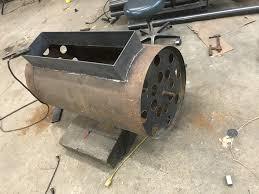Maximizing Efficiency with Wood Stove Heat Exchangers
Release time:
2025-06-27
Wood stove heat exchangers are innovative devices designed to enhance the heat transfer capabilities of wood stoves, making them more efficient and effective in warming spaces. By maximizing the use of heat produced during combustion, these exchangers help to distribute warmth throughout a given area, significantly improving the overall heating performance. One of the primary functions of a wood
Wood stove heat exchangers are innovative devices designed to enhance the heat transfer capabilities of wood stoves, making them more efficient and effective in warming spaces. By maximizing the use of heat produced during combustion, these exchangers help to distribute warmth throughout a given area, significantly improving the overall heating performance.
One of the primary functions of a wood stove heat exchanger is to capture and utilize the hot gases produced during the burning of wood. Instead of allowing this heat to escape through the flue, the heat exchanger transfers it to the surrounding air or water. This process not only raises the temperature of the living space but also allows the wood stove to operate more efficiently, ultimately reducing the amount of wood needed for heating.

In industrial settings, the application of wood stove heat exchangers can lead to substantial energy savings. By integrating these units into heating systems, businesses can benefit from lower fuel costs and a reduced carbon footprint. This is particularly important in an era where energy efficiency and environmental responsibility are paramount.
Furthermore, wood stove heat exchangers come in various designs, allowing them to be tailored to specific heating needs. Some models are equipped with fans to facilitate airflow, while others utilize passive heat transfer methods. This versatility enables users to select the most appropriate solution for their particular application.
Maintenance is another critical aspect to consider when discussing wood stove heat exchangers. Regular cleaning and inspection are necessary to ensure optimal performance. Over time, soot and ash can accumulate within the heat exchanger, obstructing airflow and reducing efficiency. Implementing a routine maintenance schedule is essential for sustaining the longevity and effectiveness of the system.
When selecting a wood stove heat exchanger, it is vital to consider several factors, including the size of the stove, the heating requirements of the space, and the specific design features that align with your needs. Consulting with experts in the field can provide valuable insights and guidance in making the best choice.
In conclusion, wood stove heat exchangers represent a significant advancement in heating technology, offering improved efficiency and enhanced performance. By effectively capturing and redistributing heat, these devices not only make wood stoves more effective but also contribute to sustainable energy practices. Whether in residential or industrial applications, understanding the functionality and benefits of wood stove heat exchangers can lead to more effective heating solutions.
Latest News
The Future of Wood Stove Heat Exchangers: Trends to Watch
The Future of Wood Stove Heat Exchangers: Trends to Watch Table of Contents 1. Introduction to Wood Stove Heat Exchangers 2. Understanding the Technology Behind Wood Stove Heat Exchangers 3. Key Trends Influencing the Future of Heat Exchangers 3.1 Advancements in Material Science 3.2 Enhanced Efficiency Standards 3.3 Integration of Smart Technology 4. Environmental Impact and Sustainability 5. Con
2025-06-28
Cam rotor pumps help industrial production upgrades
Cam rotor pumps help industrial production upgrades
2025-06-27
Maximizing Efficiency with Wood Stove Heat Exchangers
Wood stove heat exchangers are innovative devices designed to enhance the heat transfer capabilities of wood stoves, making them more efficient and effective in warming spaces. By maximizing the use of heat produced during combustion, these exchangers help to distribute warmth throughout a given area, significantly improving the overall heating performance. One of the primary functions of a wood
2025-06-27
The Advantages of Modular Scraped Surface Heat Exchangers: Enhancing Efficiency in Thermal Processes
The Advantages of Modular Scraped Surface Heat Exchangers Introduction to Modular Scraped Surface Heat Exchangers In today’s industrial landscape, optimizing thermal processes is crucial for efficiency, effectiveness, and sustainability. Among the various heat exchange methods available, **modular scraped surface heat exchangers** (MSSHE) have emerged as a leading solution. These systems are speci
2025-06-26
Understanding Scraped Surface Heat Exchangers: Key Insights for Industrial Applications
Scraped surface heat exchangers (SSHEs) are essential devices in industrial thermal management, particularly suited for processes that involve viscous fluids or those containing solid particles. Unlike traditional heat exchangers, SSHEs have a unique design that enhances heat transfer efficiency through a scraping mechanism. The primary function of a scraped surface heat exchanger is to facilitate
2025-06-25
Why Regular Testing is Crucial for Scraped Surface Heat Exchangers
Understanding Scraped Surface Heat Exchangers Scraped surface heat exchangers (SSHEs) are specialized equipment designed for efficient heat transfer in processes involving viscous fluids, such as food, pharmaceuticals, and chemicals. The unique scraping mechanism prevents the build-up of deposits, allowing for effective heat transfer and better product quality. However, maximizing the performance
2025-06-24








